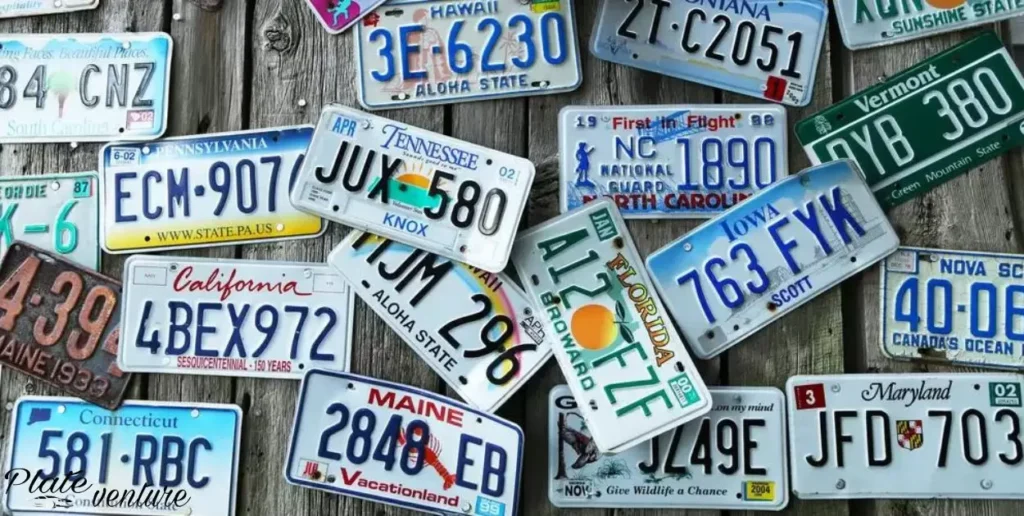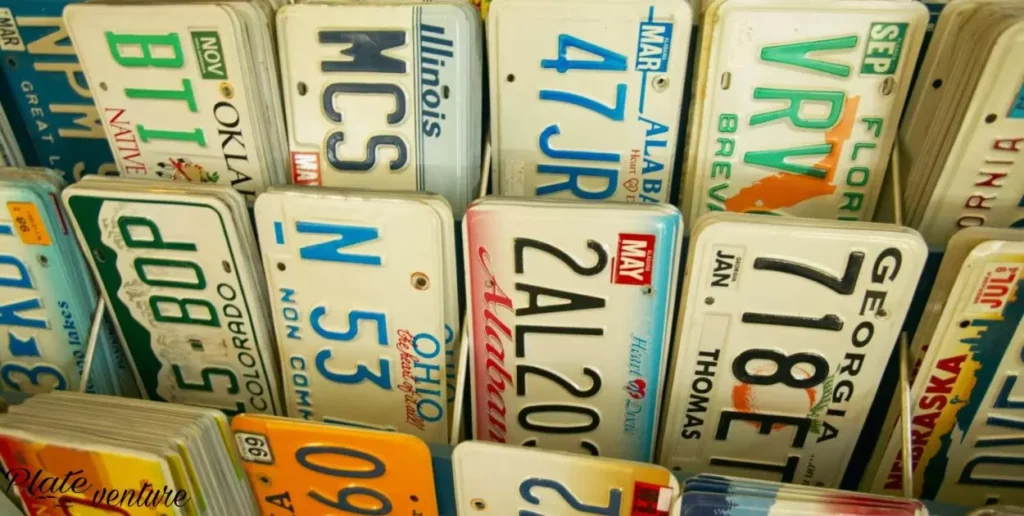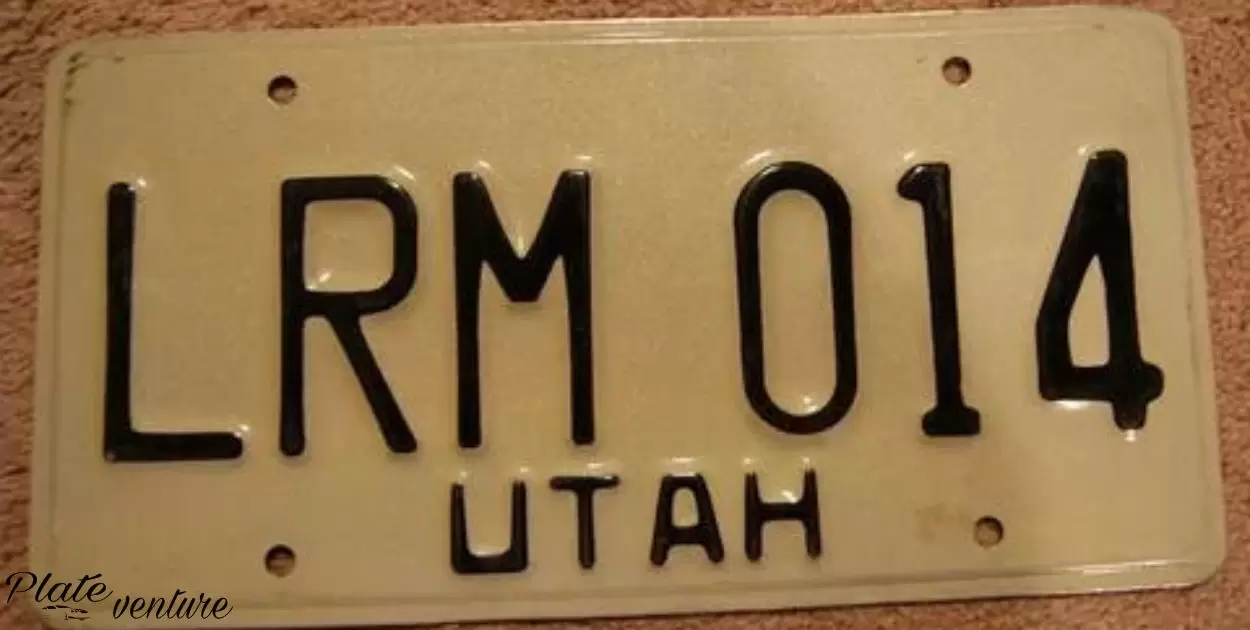License plates come in standard sizes that are set by local and national governments. In the United States, most license plates conform to a 6 inch by 12 inch rectangle. Some plates may be smaller or customized to fit special vehicle types. The standard dimensions allow plates to be easily recognized and read by people and machines.
“What Size Are License Plates?” This question arises because plates vary slightly around the world. Knowing the size helps ensure proper mounting and visibility on vehicles. Standard plate sizes also aid recognition by cameras and readers at toll booths, parking garages, border crossings and other checkpoints.
License plates are issued in standard dimensions to fit on vehicles and be easily recognized. In the U.S. most plates measure 6 by 12 inches, while some motorcycle and trailer plates are smaller at 4 by 7 inches. The familiar rectangular size with embossed or printed numbers and letters helps plates be legible to the human eye and technological readers. Consistent sizing makes license plates work dependably as vehicle identification and tracking mechanisms.
What are the standard license plate sizes?
The standard license plate size in the United States is 6 inches by 12 inches. This size is consistent across all 50 states and meets the legal requirements for license plate dimensions. A few exceptions exist for speciality vehicles like motorcycles and trailers, which use smaller plates. But for regular passenger vehicles, 6 by 12 inches is the ubiquitous size.
Standardization of plate sizes happened relatively recently, in 1956, through an agreement between states and Canadian provinces and the automobile industry. This helped establish mounting guidelines and visibility requirements fulfilled by the now-familiar 6 by 12 inch plates. Consistency in size aids recognition and functionality.
What are the typical license plate dimensions in the U.S.?
As mentioned, nearly all vehicles on U.S. roads display license plates measuring 6 inches high by 12 inches wide. This consistent rectangular size, typically with embossed or printed characters, has become an instantly recognizable symbol of vehicle registration and identification throughout the country.
The familiar 6 by 12 inch dimensions meet legal needs for visibility and legibility. Plates are easier to mount using standardized holes spaced 7 inches apart. Uniform sizing also aids machine reading of plates at toll booths, parking facilities and other checkpoints through cameras and scanners calibrated to expect plates of this size.
How big are license plates for motorcycles and trailers?
While cars and trucks use 6 by 12 inch license plates in the U.S., specialized vehicles like motorcycles and trailers use smaller plates. These measure just 4 inches high by 7 inches wide, less than half the total area of passenger vehicle plates.
The smaller motorcycle and trailer plates meet the same visibility goals but avoid covering too much of the vehicle’s bodywork. They can fit on smaller mounting surfaces and weigh less. But they still contain all the identifying plate numbers and markings essential for vehicle registration and licensing.
Why are some license plates smaller or larger than the norms?
Vehicle types with significant size, weight and usage differences from typical passenger cars require license plates suited specifically to their needs. That’s why motorcycles and trailers employ smaller 4 by 7 inch plates in the United States. Other specialty vehicles can use larger plates.
Unusual vehicle shapes and surfaces may not accommodate standard plates well. Large commercial trucks often mount front plates that measure 12 by 5.5 inches, better fitting the truck’s angled grille. Making plates smaller or larger than the norms preserves critical identification abilities when the standard 6 by 12 inch size isn’t feasible.
How do non-standard sizes affect license plate use?

When license plates don’t conform to the expected 6 by 12 inch dimensions, it can complicate their use and function. Smaller motorcycle plates allow less space for large embossed numbers and regional graphics. Oversized plates on trucks may not work with cameras and scanners designed to capture plates of regular sizes.
Non-standard plates can confuse viewers used to the familiar rectangular size, negatively impacting legibility. Unless mounted carefully, oddly sized plates may tilt or flex in ways that prevent machine reading. And outdated equipment like plate holders may not grip custom-sized plates as securely. So consistent sizing helps license plates perform dependably.
How are license plate dimensions determined?
License plate sizes are determined by local jurisdictions and national governmental agencies. In the United States, the standard 6 by 12 inch dimensions used by most states were established through an agreement in 1956 between the American Association of Motor Vehicle Administrators and automotive manufacturers.
This helps create consistency across states for visibility and recognition. Other countries set their own license plate size standards based on factors like vehicle types and ability to accommodate necessary plate information. While a standard size is used for regular vehicle plates in the U.S., motorcycle and smaller vehicle plates may use altered dimensions like 4 by 7 inches.
These compact sizes are better suited for mounting on smaller vehicles. Some trailers and special equipment also require smaller custom plates as determined by state agencies. Plate sizes may additionally vary by purpose, with temporary and novelty plates allowed to deviate from the norms.
Who sets the sizes for license plates?
In the United States, license plate sizes are determined through agreements between entities like state motor vehicle agencies and national associations of automakers and traffic safety councils. This allows standards to be set that meet governmental identification and visibility needs while fitting appropriately on vehicles.
Individual states have authority for setting dimensions of motorcycle and special vehicle plates issued within their jurisdictions. Internationally, national governments and multinational organizations are responsible for establishing country or region-wide license plate sizes.
The European Union has general size guidelines, while specific dimensions are left to individual member countries. Nations base their standards on factors like vehicle types, ability to fit necessary plate information, and recognition requirements of road technology. This results in larger plates more common in Europe and Asia versus North American norms.
What factors guide license plate size standards?
Key factors that guide license plate size norms, including governmental visibility needs, vehicle mounting capability, and required plate details. Standard dimensions ensure recognition by the human eye and toll road cameras.
They allow plates to display critical information legibly. In smaller vehicles like motorcycles, compact plate dimensions ensure visibility and proper mounting. Trailer plates may be vertically oriented on the towed vehicle tongue.
While car and truck plates aim for uniformity, specialized vehicles can prompt variations in shape and orientation while maintaining functionality. License plate screw size is also crucial for proper mounting, ensuring stability and compliance.
How do license plate sizes vary globally?
5 simple benefits of how license plate sizes vary globally:
- Lets places design plates to fit their needs. Some want big plates to see better. Others want little ones to look nice.
- Allows for plates that fit different vehicles. Small motorcycles can have tiny plates. Big trucks can have larger ones.
- Gives countries cultural choices. The sizes can match what people like in each place.
- Drives creativity and customization. New special sizes make plates more unique and fun.
- Shows the world is diverse. Different places value different things. Plate sizes remind us no one rule fits all.
What creates differences in license plate sizes?
There are many reasons license plates come in different sizes. Some main reasons are:
- Different places have different rules. States and countries choose their own sizes.
- Some places want smaller plates to look nice on cars. Others use bigger ones to see better.
- Small vehicles like motorcycles need smaller plates to fit.
- New technology sometimes needs more space for things like RFID chips.
- People like to customize plates, so new sizes help them be creative.
| Reason | Explanation |
| Regulations | States and countries set their own size rules |
| Aesthetics | Small plates look nice, big ones are easier to read |
| Vehicle Size | Small vehicles need compact plates |
| New Technology | RFID chips may require more plate area |
| Customization | New sizes allow more personalization |
Why are consistent license plate sizes important?
Having consistent license plate sizes is crucial for ensuring they are legible and identifiable on vehicles. Standard dimensions allow plates to be mounted properly for high visibility, and support machine reading at tolls, parking garages, and other checkpoints. This aids authorities in vehicle identification and tracking.
How do standard sizes aid license plate visibility?

Standard 6 by 12 inch license plate sizes mandated in the U.S. are designed for optimal visibility on vehicles. The consistent rectangular shape and mounting location means drivers and security cameras can easily spot and read them. This aids identification and looks uniform across different vehicle makes and models.
How do common dimensions help with machine reading?
Machine reading technology like cameras and sensors at toll booths rely on recognizing the standard size and shape of license plates to capture the plate numbers. Consistent sizing parameters help calibration and functionality. Without common plate dimensions, misreads would increase and the automation benefits would diminish.
What problems can odd-sized plates cause?
Non-standard sized license plates can create issues with visibility, legibility, and machine reading functionality. They may fit poorly on vehicles, slip out of plate holders, get obscured, or confuse camera systems. This leads to missed identifications, unpaid tolls, and other headaches for authorities and vehicle owners.
Would variable sizes affect license plate functionality?
Having every vehicle with its own unique license plate size would undermine many of the key functions plates provide. Visibility and legibility would suffer, standard mounts wouldn’t work, and machine readers would struggle. This would impact parking enforcement, toll collection, border checks, amber alerts, and more. Keeping standard sizes aids recognition and functionality.
How should license plates be mounted based on their size?
License plates should be mounted according to local regulations and manufacturer guidelines to ensure visibility. Plate size, shape, and bolt hole spacing dictate proper positioning and attachment methods. Following best practices for each plate type and size ensures legibility.
What are the best practices for mounting 6 x 12 inch plates in the U.S.?
The standard 6 by 12 inch U.S. license plate should be bolted at the top and bottom holes, 21⁄2 inches from the sides and 1⁄2 inch from the edge. Plates should be mounted as close to parallel as possible without obstruction in the center. Some tilt is acceptable to prevent glare and aid visibility.
What adjustments are needed to mount small motorcycle plates?
Because motorcycle license plates are just 4 by 7 inches, they require different mounting than standard plates. Often vertical mounting or angled brackets are needed to properly display these compact plates without obstruction. Flexible mounts may also aid positioning.
How does plate size impact visibility and legibility?
License plate size greatly impacts the visibility and legibility of the plate. Smaller plates need to be mounted carefully to maximize character recognition. Standard 6 by 12 inch plates offer ample space for legible numbering when properly mounted. Visibility is also enhanced by size standardization.
What issues arise if plates are mounted incorrectly?
Incorrect license plate mounting reduces visibility, causes glare, and hinders readability. This can prevent accurate human reading and technological scanning. It also poses compliance issues and risks of citation. Obstructed or angled plates appear improper and can project a negative vehicle image.
How well do current license plate sizes work?
The typical 6 inch by 12 inch license plate size used in the U.S. has worked well for decades. This size provides good visibility and accommodation of all necessary plate components like jurisdiction name, plate numbers, and registration stickers. The dimensions also enable license plates to be easily mounted, read by machines, and recognized by people.
Are the typical 6 x 12 inch plates still highly functional?
Yes, the long-standing 6 by 12 inch license plate standard continues to prove highly functional. These dimensions make plates prominently visible on vehicles for easy human reading. The size also works for all types of license plate readers and scanners used for security, toll collection, parking, and law enforcement.
Is a smaller license plate size ever beneficial?
Smaller license plates around 4 by 7 inches can benefit certain vehicle types like motorcycles where space is limited. Compact sizes also allow greater flexibility in plate mounting locations. However, smaller plates reduce visibility and may not accommodate complex plate designs with extra text or graphics.
What factors might prompt changes in license plate dimensions?

Reasons to alter license plate size standards could include vehicle styling trends that limit mounting areas, new security features like RFID chips requiring more area, or technology shifts if digital plates replace physical plates. Consumer customization preferences could also drive market pressure for greater size options.
Will digital plates replace the need for physical sizing standards?
If digital license plates eventually replace embossed metal plates, the relevance of standardized physical dimensions would decrease. Digital screens could show license plate numbers and design elements without sizing limits. However, standardized digital plate dimensions may still be needed for mounting, visibility, and recognition by cameras.
Frequently Asked Question
What are the typical dimensions for license plates in the United States?
The most common size for license plates in the U.S. is 6 inches by 12 inches.
Do all states use the same license plate measurements?
While that size is standard, some states have plates that vary slightly in dimensions to accommodate unique designs.
Why do motorcycle license plates tend to be smaller?
Motorcycle license plates are often around 4 by 7 inches since motorcycles have less surface area for mounting plates.
What country has the largest license plate size requirement?
Saudi Arabia has one of the largest license plate sizes at 20 inches long by 12 inches high.
Could my custom license plate use non-standard dimensions?
Some jurisdictions do allow custom plates to be issued in sizes that differ from the normal dimensions.
Conclusion
What Size Are License Plates? come in standard dimensions set by law. This makes them easy to see and scan. In the U.S. most plates are about 6 inches by 12 inches. The familiar shape and size helps people and machines read them quickly. Some places allow smaller motorcycle or custom plates. But having a usual size is important. It means What Size Are License Plates? works well all over.
Even with some variety, What Size Are License Plates? must meet guidelines. Plates need to fit on vehicles properly to be noticed. Standard sizes mean cameras and readers can use them easily too. The consistent sizing of What Size Are License Plates? is key for identification and enforcement. So dimensions are not casual, but set for good reasons. That is why plates are made to standard shapes within certain accepted sizes. It helps this key piece of vehicle ID work reliably.








